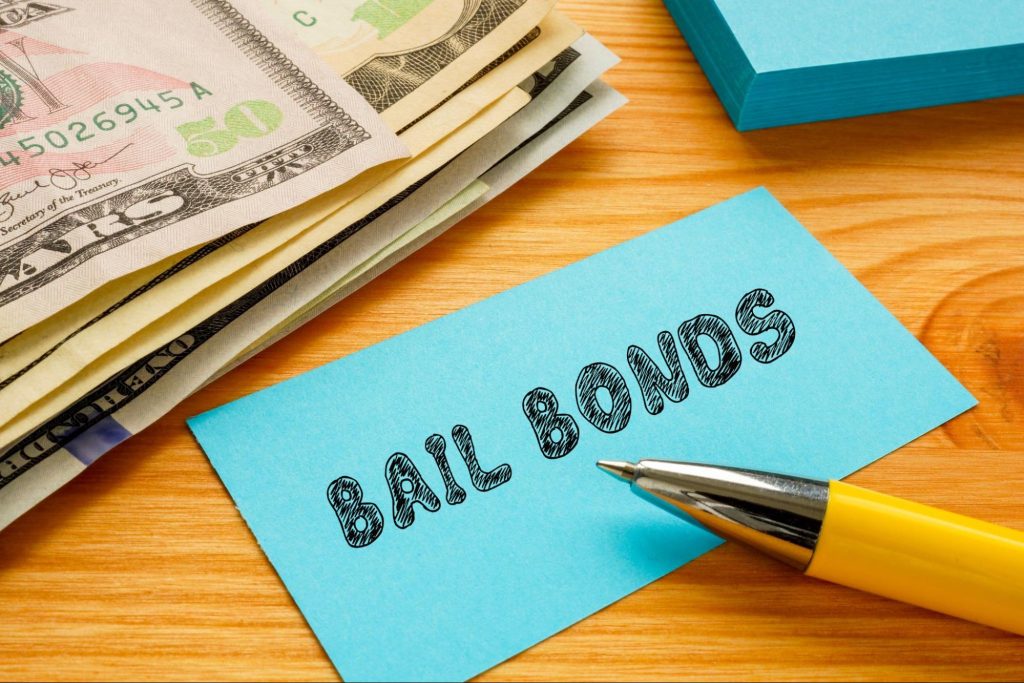Typical Misconceptions About Making Use Of a Los Angeles Bail Bondsman
Understanding the Basics of Bail Bonds: What You Need to Know
Navigating the intricacies of bail bonds is an essential element of the legal system that can significantly impact the implicated's trip through court proceedings. The ins and outs of exactly how bail bonds run, the different kinds offered, and the crucial factors to consider in choosing a trustworthy bail bondsman can be discouraging.
What Is Bail?
Bail is an economic plan that enables an individual accused of a crime to be released from safekeeping while awaiting trial. The key objective of bail is to make certain that the accused appears for future court procedures (Los Angeles Bail Bondsman). Usually set by a court, the bail quantity varies depending on the nature of the criminal activity, the accused's criminal history, flight risk, and various other important factors
When bail is given, the implicated or a rep should pay a specified amount, which might remain in money or through a bail bond. In many cases, bail can be refuted altogether, specifically for significant offenses or if the suspect postures a significant risk to public safety. The principle of bail is rooted in the anticipation of innocence, strengthening the concept that people need to not be penalized before a sentence.

Understanding Bail Bonds
A bail bond is an economic instrument that promotes the launch of an accused individual from wardship, working as a warranty for their look at future court dates. This arrangement allows offenders to keep their freedom while awaiting trial, decreasing the worries linked with imprisonment. The bail bond procedure generally includes a third-party firm, referred to as a bond bondsman, who provides the essential funds to the court in behalf of the implicated.
Bail bonds can be found in numerous types, consisting of guaranty bonds, property bonds, and cash bonds, each with unique needs and ramifications. Surety bonds, the most common kind, call for a superior repayment, usually a percent of the total bail quantity, which is non-refundable. In comparison, a property bond involves using realty as security, while money bonds necessitate the complete bail total up to be paid ahead of time.
Comprehending the nuances of bail bonds is important for accuseds and their family members. It is necessary to grasp the potential monetary effects, consisting of responsibilities and charges to the bail bondsmansman, as well as the lawful responsibilities tied to ensuring court appearances. Expertise of these aspects help in making informed choices throughout a challenging time.
Just How Bail Bonds Work
The procedure of protecting a bail bond generally involves several crucial steps that make sure the charged can reclaim their flexibility while awaiting test. The private or their depictive get in touches with a bail bondsman, who evaluates the situation and the connected threats. The bondsman will need details concerning the charged, consisting of the costs, the bail quantity established by the court, and any kind of relevant personal information.
As soon as the bail bondsman concurs to offer the bond, the charged or their agent must pay a non-refundable cost, normally a percentage of the complete bail amount. This fee compensates the bail bondsman for handling the monetary risk of making sure the implicated shows up in court. Sometimes, collateral may additionally be called for, such as residential property or important possessions, which works as safety and security for the bond.
After the fee and any security are set up, the bondsman submits the essential documentation to the court. Upon authorization, the bail is uploaded, and the charged is released from wardship. It is essential for the charged to stick to all court dates and problems, as failure to do so can cause the forfeit of the bond and potential lawful effects.
Sorts Of Bail Bonds
Different kinds of bail bonds are readily available to match different circumstances and needs. One of the most typical type is the guaranty bond, where a bail bondsman warranties repayment of the complete bail amount to the court for a non-refundable charge, normally around 10% of the bail. This setup permits offenders to protect their launch without paying the entire bail upfront.
Another kind is the cash bond, which calls for a co-signer or the offender to pay the full discover this info here bail amount in money directly to the court - Bail Bonds. This option is frequently favored for lower bail amounts, as it makes sure the cash is returned upon the accused's appearance in any way court proceedings
Building bonds involve the usage of real estate as collateral. In this situation, the Go Here court puts a lien on the residential property, which can be forfeited if the offender fails to appear.
Last but not least, federal bail bonds are particularly made for federal situations, often involving greater quantities and added complexities. Comprehending these different bail bond types is important for offenders and their family members in making informed decisions throughout a tough time.
Picking a Bail Bondsman
When selecting a bondsman, it is necessary to take into consideration several key elements that can affect the general experience and outcome. Assess the bondsman's online reputation by investigating on the internet evaluations and obtaining referrals from trusted resources. A trusted bail bondsmansman will certainly have a background of professionalism and trust and effective situations.

It is likewise critical to comprehend the cost framework. A lot of bail bondsmensman charge a non-refundable fee, usually around 10% of the bail amount. Watch out for any concealed charges or uncommon repayment techniques. Openness in rates is a hallmark of a trustworthy bail bondsman.
Conclusion
In summary, comprehending the fundamentals of bail bonds is necessary for individuals involved in the lawful system. Bail offers as a financial guarantee of court appearance, while various sorts of bail bonds satisfy different situations. Recognizing the operational devices of bail bonds and choosing a trusted bail bondsmansman can substantially influence the overall experience. A comprehensive evaluation of available choices guarantees notified decision-making, inevitably helping with a smoother navigation through the intricacies of the lawful procedure.
The complexities of just how bail bonds operate, the numerous types available, and the essential factors to consider in picking a reliable bail bondsman can be discouraging. The bail bond procedure usually entails a third-party firm, known as a bail bondsman, that supplies the needed funds to the court on part of the charged.
The most common type is the surety bond, where a bond bondsman warranties payment of the full bail amount to the court in exchange for a non-refundable fee, usually around 10% of the bail. Bail offers as a financial guarantee of court appearance, while different kinds of bail bonds cater to various circumstances. Understanding the operational mechanisms of bail bonds and choosing a reliable bail bondsman can substantially affect the overall experience.